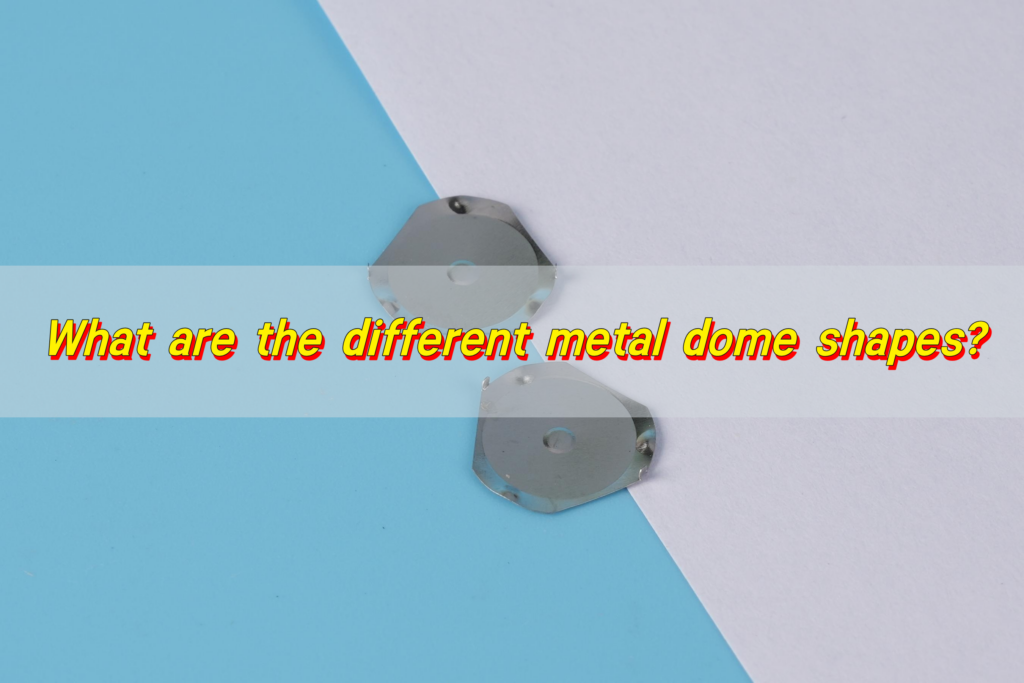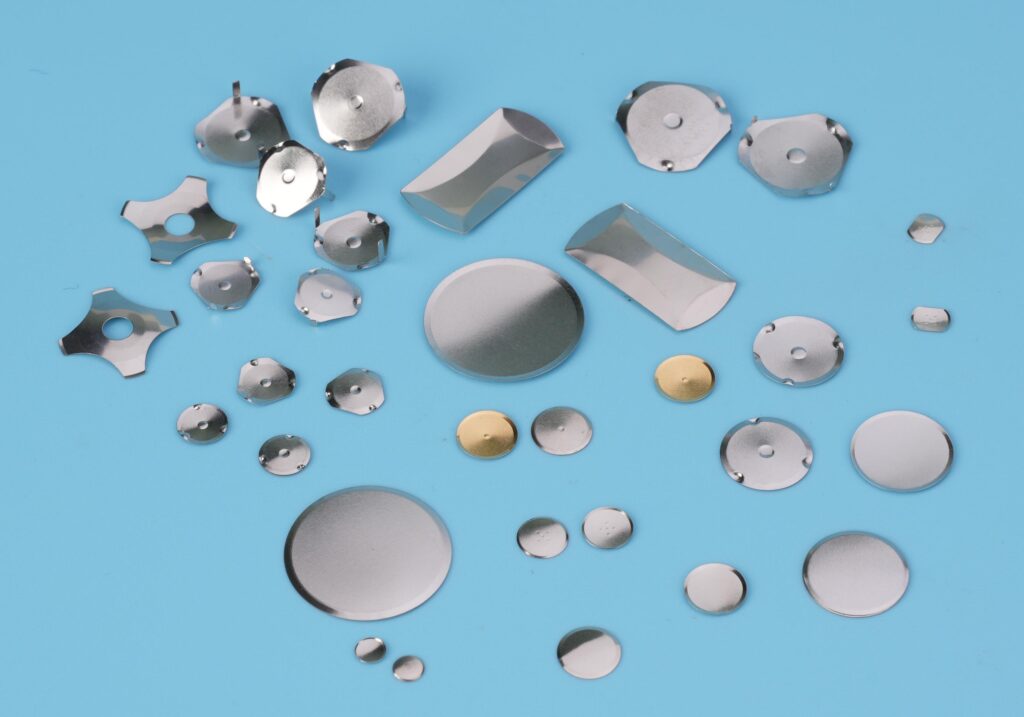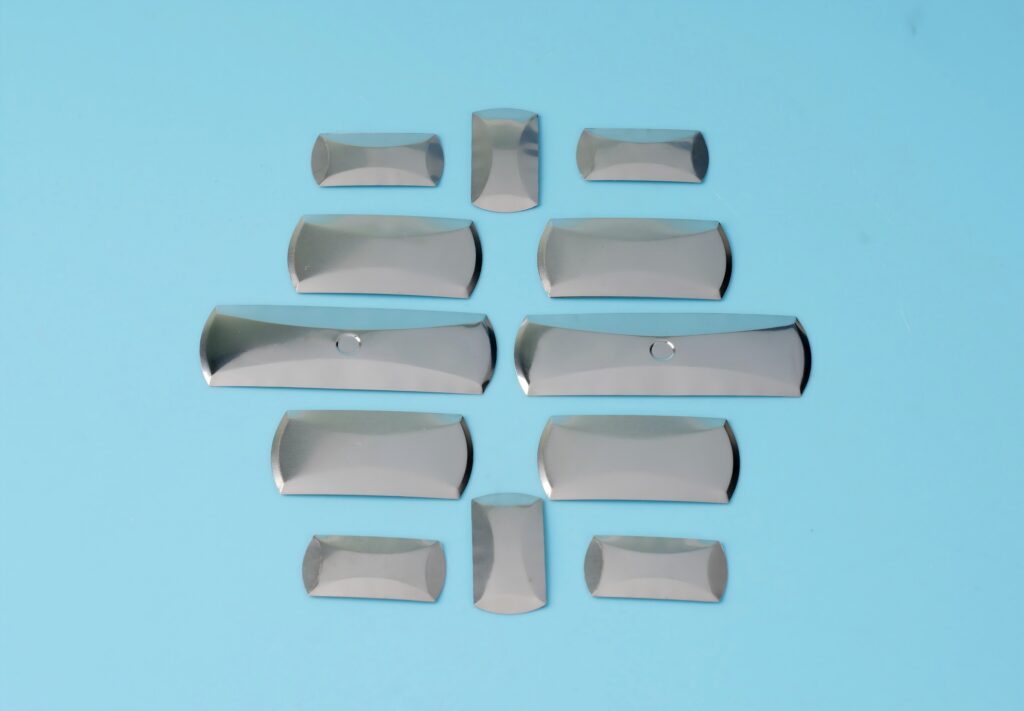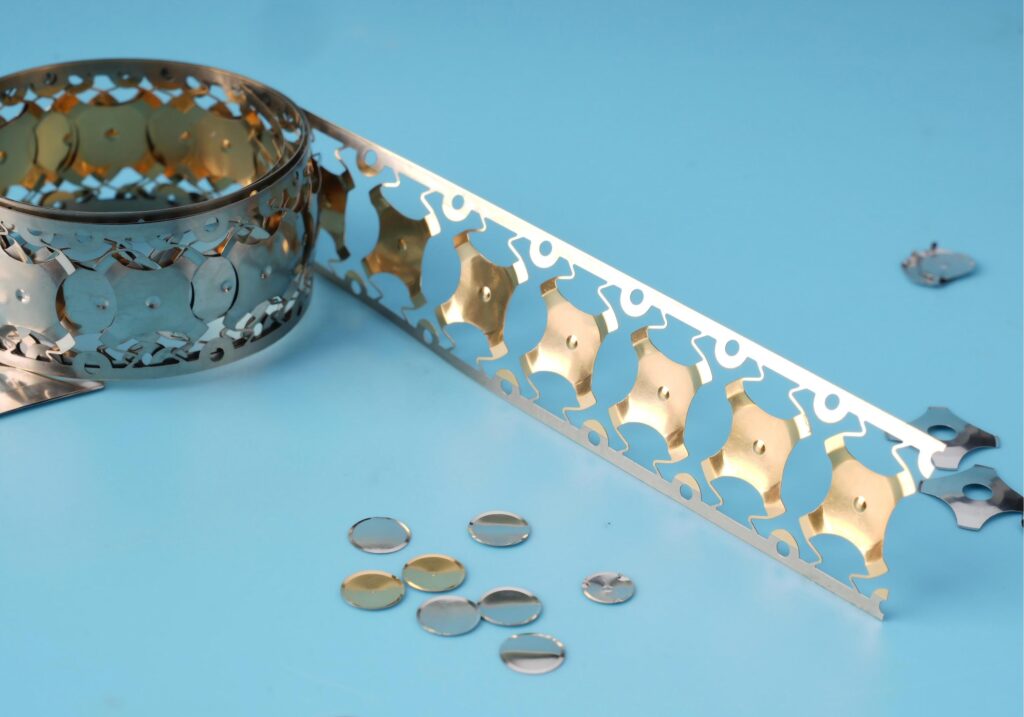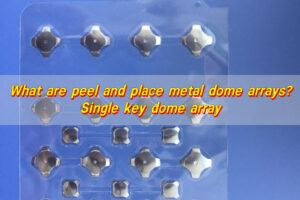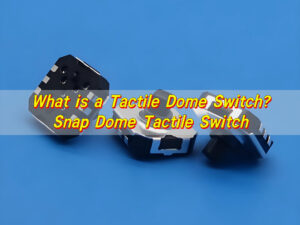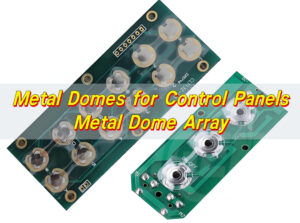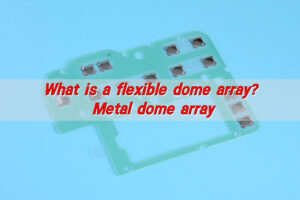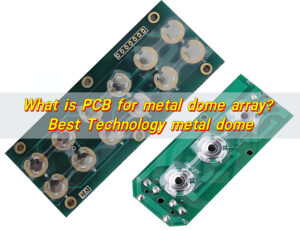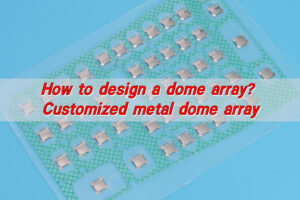Metal dome has many shapes, such as circle, cross, triangle and oblong, and each shape is suitable for different scenarios. Circular domes are symmetrical and stable, cross domes have a strong sense of direction, triangle domes have a large contact area, and oblong domes have a large travel and good feel. Choosing the right shape can improve device performance and user experience.
What is the shape of a dome?
Dome is typically described as a curved structure, much like the top of a hemisphere. In the world of electronic components, a metal dome is a small, dome-shaped piece of stainless steel that snaps when pressed. The shape can vary based on function.
Common dome shapes include four-leg domes, triangle domes, round domes, oval domes, and even custom designs. Each variation supports different actuation needs, tactile feedback, and space constraints. While the surface curves gently, the underside is engineered with precision to provide stable performance under force. The structure is thin yet strong, allowing for repeated compressions without deformation.
Why are metal dome shapes important?
Metal dome shapes play a crucial role in how a device responds to touch. Each shape is tailored to offer a specific tactile experience and level of reliability. For instance, four-leg domes distribute pressure evenly, making them ideal for consistent feedback in a dome switch keyboard. Triangle domes, on the other hand, work well in compact layouts where space is limited. A round dome provides softer feedback, which is often preferred in handheld devices.
When designing a tactile metal dome switch, shape selection influences actuation force, lifespan, contact stability, and user experience. In essence, the right dome shape ensures that each click feels deliberate and accurate. This helps prevent misclicks and improves usability.
How to make a metal dome?
Making a metal dome starts with selecting the right material—usually high-grade stainless steel. The process begins with a flat sheet of metal, often as thin as 0.05mm. This sheet is then stamped to the desired dome shape. Advanced forming techniques use pressure to create the dome curve without weakening the structure.
After shaping, the dome may go through surface treatments like gold or nickel plating to improve conductivity and corrosion resistance. Some domes are also tested for actuation force and snap ratio. Precision tools and quality control are key.
The dome must return to its original shape after each press and perform reliably for millions of cycles. The end result is a strong, flexible component ready to be placed in a snap dome switch or dome array.
Can metal dome shapes be custom designed?
Yes, metal dome shapes can be custom designed to fit unique requirements. If a standard dome doesn’t meet the needs of a specific product, BEST Technology can create a new shape from scratch. This flexibility is vital in devices with space limitations or special tactile feedback needs.
For example, a wearable device might need a small oval dome to fit within a tight housing, while a medical keypad might require a high-force triangle dome for accuracy and durability.
Custom designs also allow for tailored snap ratios, dome heights, and leg patterns. BEST Technology support this customization, offering quick prototyping and testing.
Can different metal dome shapes affect performance?
Absolutely. The shape of a metal dome affects almost every aspect of its performance. Different shapes result in different actuation forces, rebound speeds, and tactile sensations.
A four-leg dome typically offers a balanced feel and high durability. Triangle domes create sharper feedback but can be more forceful. Round domes are softer and more subtle in response. The choice of shape also influences the dome’s ability to return to its original form after actuation.
A well-designed tactile dome will snap back quickly, enhancing responsiveness. Performance metrics like tactile ratio, durability, and actuation repeatability all depend heavily on the shape. Matching the right shape with the right application improves user satisfaction and extends product life.
How do metal dome shapes influence electrical conductivity?
Metal dome shapes determine how and where contact is made with the circuit board. When a dome is pressed, it completes an electrical path. The effectiveness of this connection depends on how evenly the dome touches the conductive pads beneath it.
Four-leg domes provide multi-point contact, which often results in reliable conductivity. Triangle domes offer focused contact, useful for high-precision input. Round domes may require more accurate alignment, but they can still ensure strong connectivity.
The curvature and contact area of the dome also play a role. A well-formed dome allows for full contact without resistance or delay. Some shapes are designed to press harder on smaller pads, improving signal clarity.
Proper dome shaping also reduces contact bounce, which helps prevent errors. In tactile metal dome switches, good conductivity means fast, stable signal transmission.
Do metal dome shapes impact tactile feedback?
Yes, dome shapes directly affect the tactile experience. The feedback you feel when pressing a dome is a result of its mechanical properties—primarily influenced by shape.
Four-leg domes provide a balanced and sharp snap. This makes them ideal for applications where precision matters, such as industrial controls. Triangle domes offer a quicker, stiffer response, while round domes provide a smoother, softer press.
Snap ratio is a critical factor here. It refers to the difference between the peak force and the return force. A higher snap ratio delivers stronger feedback. Dome height and curvature also contribute to feel. A taller dome may feel more responsive but requires more force. A flatter dome feels lighter but may offer less feedback.
What applications suit specific metal dome shapes?
Different applications benefit from different dome shapes. In remote controls, round domes are popular for their soft touch and quiet actuation. Four-leg domes are commonly used in membrane keypads and dome switch keyboards, where even pressure and reliable contact are essential. Triangle domes are often found in compact electronic devices, offering fast feedback in a small footprint. Oval domes are best for long or narrow spaces, such as wearable tech or handheld instruments.
Medical equipment often requires domes with high force and precise contact—four-leg and custom domes work well here. For automotive dashboards or industrial panels, domes must endure frequent use and harsh conditions, making triangle or four-leg domes ideal.
Each dome shape serves a purpose, and matching the shape to the use case is key to success.
Conclusion:
Metal dome shapes are more than structural features—they define the user experience. From actuation force to tactile feel and electrical contact, the shape you choose impacts every press.
Custom designs offer even more flexibility, ensuring your product performs exactly as needed. With well-formed dome shaped metal, every click is precise, reliable, and satisfying.
For expert guidance, custom solutions, or high-quality metal domes, contact us at sales@metal-domes.com


